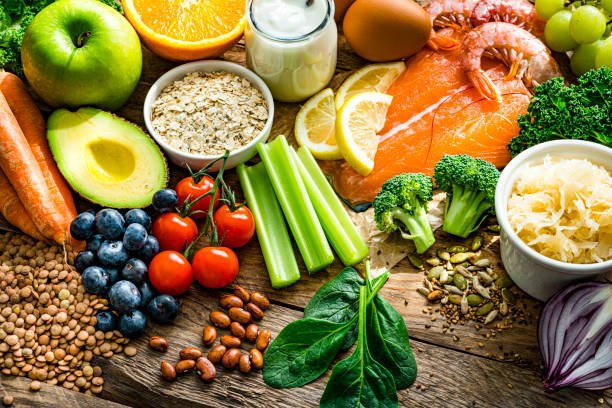Once upon a time, food was just food. It was something you grew, bought, cooked, and ate. It filled your belly and maybe, just maybe, brought your family together around the dinner table. But in today’s world of kale smoothies and goji berry bowls, food has taken on a new identity—one that comes with a cape. Welcome to the age of superfoods.
The word superfood has become a buzzword in the wellness industry, splashed across health magazines, dominating Instagram feeds, and crowding the shelves of trendy supermarkets. But what exactly is a superfood? Is it a scientific category? A marketing gimmick? A miracle cure in edible form? Or is it simply a convenient label for nature’s most nutrient-packed offerings?
This article dives deep into the world of superfoods—what defines them, why they’ve captured the world’s attention, and what science really says about their health benefits. Are they truly “super,” or is that title a bit of a stretch? Grab your chia pudding and settle in, because we’re about to peel back the layers on one of the most fascinating trends in nutrition.
Defining the Super in Superfoods
Let’s begin with the basics. “Superfood” isn’t a term you’ll find in any official scientific classification. There’s no regulatory body that decides which foods qualify for this title. Instead, the term is often used loosely to describe foods that are especially rich in nutrients and thought to provide exceptional health benefits.
Typically, superfoods are plant-based, though some fish and dairy products make the cut. They’re usually loaded with vitamins, minerals, antioxidants, fiber, and phytonutrients. They may help prevent chronic disease, enhance immunity, or support longevity. At least, that’s the claim.
But here’s the catch: almost all whole foods—fruits, vegetables, legumes, nuts, seeds, and grains—have nutritional value. So what elevates some to “super” status while others remain simply healthy? The difference often lies in concentration. Superfoods pack a particularly high dose of beneficial compounds into a relatively small serving.
It’s not just about individual nutrients either. The synergy between components matters. The antioxidants in blueberries, the omega-3 fatty acids in salmon, the polyphenols in green tea—these work together in complex ways that enhance their effects. And it’s this biochemical teamwork that gives superfoods their scientific allure.
Ancient Roots and Modern Resurgence
Superfoods aren’t a modern invention. In fact, many have roots that trace back centuries or even millennia. The ancient Inca civilization revered quinoa as “the mother grain.” Turmeric has been a staple of Ayurvedic medicine in India for over 4,000 years. Moringa leaves have long been used in traditional African and Asian medicine.
What’s new is the modern rediscovery of these ancient wonders. With the rise of globalization and the internet, foods that were once confined to specific regions are now available around the globe. And as the health-conscious public grows more curious about natural healing and preventive care, these time-honored ingredients are getting a second life in smoothie bars and online wellness blogs.
There’s also a psychological component at play. In a fast-paced world filled with synthetic pills and processed food, superfoods offer something pure, elemental, and ancient. They feel like a bridge between the old wisdom of nature and the new science of nutrition. Whether that’s marketing magic or genuine value depends on your perspective—and the evidence.
Superfoods in the Lab: What Science Says
So let’s talk evidence. It’s one thing to call a food “super” and another to prove it through rigorous scientific research. Fortunately, many superfoods have been studied in clinical settings, with promising results.
Take blueberries, often crowned the king of superfruits. Rich in anthocyanins, these deep blue berries have been linked to improved memory, reduced inflammation, and lower risk of heart disease. One study from Harvard University found that women who ate more blueberries and strawberries experienced slower cognitive decline as they aged.
Then there’s salmon, a fatty fish that’s practically synonymous with omega-3s. These essential fats have been shown to reduce triglyceride levels, improve brain health, and potentially lower the risk of depression. Unlike some trendy superfoods that come and go, salmon’s health benefits are backed by decades of consistent research.
Other superfoods, like kale, chia seeds, and green tea, have similarly strong reputations. Kale boasts vitamins A, C, and K, along with calcium and powerful antioxidants like quercetin. Chia seeds are a rare plant-based source of complete protein and fiber. Green tea is loaded with catechins that support metabolism and may help prevent cancer.
Of course, not all claims are equally robust. Some superfoods are riding high on hype with limited scientific backing. Acai berries, for example, are antioxidant-rich, but human studies haven’t confirmed the miraculous anti-aging effects promised by marketing campaigns. The same goes for exotic newcomers like maqui berries or sacha inchi.
In the end, the scientific support varies. Some superfoods are nutritional rock stars with well-documented benefits. Others are promising but need more evidence. And a few may be more about branding than biology.
The Antioxidant Angle: Fighting Free Radicals
A term you’ll often see associated with superfoods is antioxidants. These compounds help neutralize free radicals, which are unstable molecules that can damage cells and contribute to aging, inflammation, and chronic disease.
Free radicals are a natural byproduct of metabolism, but they’re also produced by exposure to pollutants, smoking, alcohol, and radiation. Left unchecked, they can lead to oxidative stress, which is implicated in conditions ranging from cancer to Alzheimer’s disease.
This is where superfoods shine. Many are packed with antioxidants—vitamin C, vitamin E, selenium, beta-carotene, and various flavonoids. Berries, especially, are antioxidant powerhouses. So are dark leafy greens, nuts, and spices like cinnamon and turmeric.
Antioxidants work in harmony to stabilize free radicals and repair cellular damage. They’re not magic bullets, but they form a crucial line of defense. By regularly consuming antioxidant-rich foods, you may support your body’s natural detoxification processes and promote long-term health.
It’s worth noting, though, that more isn’t always better. Extremely high doses of isolated antioxidants in supplement form can sometimes do more harm than good. Nature seems to know best—whole foods offer a balanced, bioavailable package that’s difficult to replicate in pills.
The Gut-Brain Connection: Feeding Your Inner Ecosystem
Another reason superfoods earn their reputation is their ability to nurture the gut microbiome. This vast, microscopic ecosystem in your digestive tract is now recognized as a cornerstone of health, influencing everything from immunity to mental well-being.
Fermented foods like kefir, sauerkraut, and kimchi contain live probiotics that replenish the gut’s good bacteria. Prebiotic foods like garlic, onions, bananas, and oats provide the fiber that these bacteria feed on. Together, they form a powerful duo that helps maintain a balanced, diverse microbiome.
Superfoods that support gut health also tend to support brain health. Scientists are uncovering more evidence for the gut-brain axis, a complex communication network linking the digestive system and the central nervous system. A happy gut can mean a happier mood, better sleep, and sharper thinking.
Superfoods like yogurt, kombucha, flaxseeds, and berries all contribute to a healthier gut environment. The fiber content helps regulate digestion and blood sugar levels, while the polyphenols act as fuel for beneficial bacteria.
In a world increasingly plagued by stress, fatigue, and mental fog, nurturing the gut through superfoods offers a natural, holistic approach to wellness.
Inflammation: The Silent Saboteur
Chronic inflammation is one of the body’s most insidious enemies. Unlike the acute inflammation you feel with a sprained ankle or sore throat, chronic inflammation simmers quietly, often without noticeable symptoms—until it leads to more serious problems like heart disease, arthritis, diabetes, or even cancer.
Superfoods are often celebrated for their anti-inflammatory properties. This isn’t just a buzzword; it’s a crucial mechanism of action. Many superfoods contain compounds that block inflammatory pathways, reduce cytokine production, and support cellular repair.
Turmeric is a standout here, thanks to its active ingredient, curcumin. Studies have shown curcumin to be as effective as some over-the-counter anti-inflammatory drugs—without the side effects. Ginger, garlic, berries, and olive oil are also potent anti-inflammatory agents.
A diet rich in anti-inflammatory superfoods may help manage pain, improve joint health, and reduce the risk of chronic disease. It’s not about eliminating inflammation completely—after all, it’s a natural immune response—but rather keeping it in check.
Superfoods in Everyday Life: Practical Wisdom
Knowing which foods are “super” is one thing. Incorporating them into your daily routine is another. The beauty of most superfoods is that they’re incredibly versatile. They blend into smoothies, top off salads, enrich soups, and transform into vibrant snacks.
The key is diversity. No single food can supply everything your body needs. The goal should be a colorful, varied diet that emphasizes whole, unprocessed ingredients. Think of superfoods not as miracle fixes but as essential tools in a much larger nutritional toolkit.
It’s also important to respect balance. Exotic superfoods can be exciting, but local, seasonal produce is often just as powerful—and more sustainable. Don’t overlook humble heroes like spinach, apples, carrots, and lentils. They may not have celebrity status, but they deliver real, lasting health benefits.
If budget is a concern, focus on the basics. Canned beans, frozen berries, and whole grains offer outstanding nutrition without breaking the bank. Super doesn’t have to mean expensive.
Debunking Myths and Marketing Hype
With popularity comes misinformation. The superfood craze has spawned a tidal wave of exaggerated claims, miracle promises, and overpriced products. It’s easy to get swept up in the excitement and forget to ask critical questions.
One common myth is that superfoods can cure diseases. While they can support health and reduce risk factors, they are not substitutes for medical treatment. They work best as part of a comprehensive lifestyle that includes exercise, sleep, stress management, and regular healthcare.
Another myth is that exotic is better. While foods like spirulina and maca root are fascinating and nutritious, they’re not inherently superior to more familiar options like broccoli or almonds. The obsession with novelty can sometimes obscure the value of simple, accessible foods.
And then there’s the issue of over-reliance. Drinking goji berry juice every day won’t undo the effects of a poor diet, smoking, or chronic stress. Superfoods are not magic bullets; they’re allies in a broader wellness strategy.
The Environmental Side of Superfoods
As we fall in love with superfoods, it’s crucial to consider their impact on the planet. The demand for certain crops—quinoa, avocados, acai—has led to deforestation, water shortages, and exploitation of local farmers. Superfoods should not come at the cost of environmental degradation or social injustice.
Sustainable sourcing, ethical farming practices, and fair trade certifications can help ensure that superfoods benefit both your body and the planet. It’s also wise to support local agriculture when possible. Regional superfoods—blueberries in North America, seaweed in Japan, moringa in South Asia—offer potent benefits with a smaller carbon footprint.
Conscious consumption is the next frontier of the superfood movement. It’s not just about what we eat, but how our choices ripple outward to affect ecosystems and communities.
Conclusion: The Power and Potential of Superfoods
So, what makes superfoods so super? It’s not just their nutrient density, antioxidant content, or exotic origins. It’s the way they embody a new way of thinking about health—one that emphasizes prevention, wholeness, and the healing power of nature.
Superfoods aren’t a silver bullet, but they are a powerful symbol of the shift toward conscious eating. They encourage us to explore the plant kingdom, to appreciate the complexity of nutrition, and to take responsibility for our well-being.
In a world full of fast fixes and fad diets, superfoods invite us to slow down, look closer, and savor the wisdom of the earth. Whether it’s the burst of flavor in a ripe berry, the golden warmth of turmeric tea, or the satisfying crunch of a walnut, these foods reconnect us with something primal, nourishing, and real.
And that, perhaps, is their greatest superpower of all.






